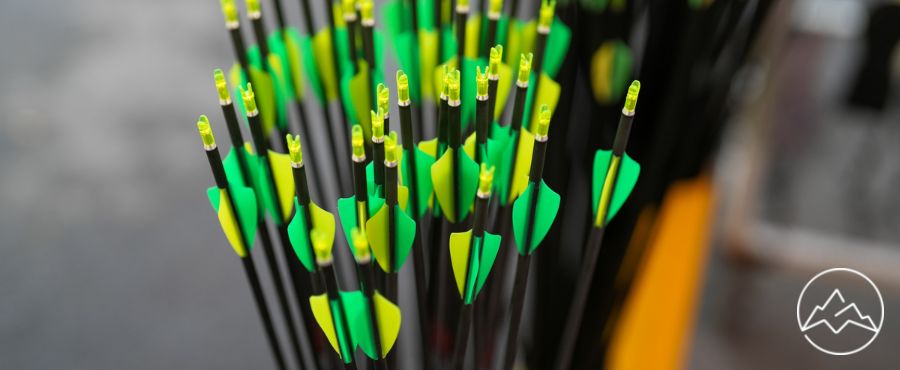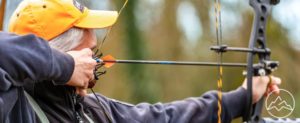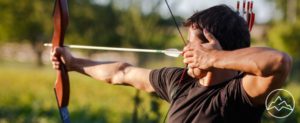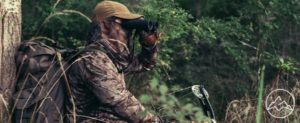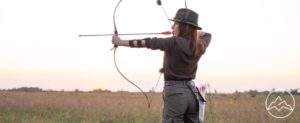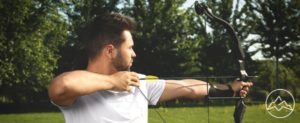Choosing the perfect arrow vanes is a crucial decision for any archer, as it directly affects the flight and accuracy of the arrow. While feathers were traditionally used, arrow vanes have emerged as a more durable and weather-resistant alternative. However, with a variety of vane options available, it can be overwhelming to determine which ones are best suited to your shooting style. In this article, we will explore the different types of arrow vanes, the factors to consider when selecting them, and the various attachment options. One may argue that the selection process is subjective and depends on personal preference. However, by understanding the specific characteristics and properties of arrow vanes, archers can make informed decisions that optimize their shooting experience. So, let’s delve into the world of arrow vanes and discover how to choose the perfect ones for your needs.
Key Takeaways
- There are a wide variety of arrow vanes to choose from, so it’s important to find the type that works best for your setup.
- Vane length affects arrow flight, with shorter vanes reducing steering ability but also reducing drag.
- The number of vanes on an arrow can be three or four, with three vanes providing stability and faster flight over long distances.
- Arrow vane color choices can affect visibility, with brightly colored fletchings being the easiest to see and darker colors being more difficult to see.
Types of Arrow Vanes
There are various types of arrow vanes available for selection, each with different characteristics and suitability for specific shooting setups. One important consideration is the material of the vanes, which can be made of either plastic or Mylar. Plastic vanes are durable and resistant to outdoor elements, making them a popular choice. On the other hand, Mylar vanes offer more flexibility but also create more drag and noise during flight. Another factor to consider is the color of the vanes. Brightly colored vanes are easier to see, while darker colors can be used to conceal the impact point during competitions. Ultimately, the choice of arrow vanes depends on individual preferences and shooting requirements.
Factors to Consider
One important factor to consider when selecting arrow fletchings is the length of the vanes, as it directly affects arrow flight and steering ability. Shorter vanes reduce drag and are suitable for outdoor/long distance shooting, especially on arrows with smaller diameters. On the other hand, longer vanes allow for quicker correction in flight but create more drag and slow down the arrow at distance. Vane height/profile is another consideration, with high-profile vanes providing stability but also creating more drag, while low-profile vanes are good for target shooters at long distances. Additionally, arrow vane color choices can affect visibility, with brightly colored fletchings being the easiest to see and darker colors being more difficult to see. It is also beneficial to experiment with different vane options to find the best fit for your shooting style.
Vane Attachment Options
Vane attachment options include straight, offset, and helical configurations, each offering varying amounts of spin and stability during arrow flight. Straight vane attachment provides maximum speed but may sacrifice forgiveness and straightness in flight. Offset vane attachment creates arrow spin, increasing stability during flight. The most common choice for offset vane attachment is a right helical configuration. Helical vane attachment provides the highest level of stabilization but also introduces more drag and noise. When considering vane color, it is important to note that brightly colored fletchings are easier to see, while darker colors may be more difficult to track visually. Some archers may choose dark-colored fletchings to conceal where their arrow impacts during competitions. Ultimately, the choice of vane attachment technique and color should be based on individual shooting preferences and the specific requirements of the shooting environment.
Frequently Asked Questions
What is the difference between high-profile and low-profile arrow vanes?
High-profile and low-profile arrow vanes differ in terms of their surface area and performance characteristics. High-profile vanes provide enhanced stability during flight, but they also create more drag, which can affect arrow speed. On the other hand, low-profile vanes are well-suited for target shooters at long distances due to their reduced drag. When it comes to material, using Mylar vanes offers advantages such as flexibility, but they also generate more drag and noise compared to plastic vanes.
Can I use feathers instead of arrow vanes?
Feathers can be used instead of arrow vanes, but they have certain advantages over vanes. Feathers are known for their natural ability to stabilize arrows during flight, as they are lightweight and flexible. They can provide a smooth and forgiving trajectory, reducing the chances of arrow wobbling. Feathers also create less drag compared to vanes, allowing arrows to maintain their speed and accuracy. However, feathers are more susceptible to damage from outdoor elements and may require more frequent replacement.
What is the advantage of using Mylar vanes over plastic vanes?
The advantages of using Mylar vanes over plastic vanes include their flexibility and resistance to outdoor elements. Mylar vanes offer increased durability and longevity, making them suitable for prolonged use in various weather conditions. Additionally, Mylar vanes provide improved stability and accuracy during arrow flight. When choosing the right arrow vane adhesive, it is important to consider factors such as compatibility with the vane material, ease of application, and strength of the bond to ensure optimal performance and reliability.
How does the number of vanes on an arrow affect its flight?
The number of vanes on an arrow can have an impact on its flight characteristics. Having three vanes on an arrow provides stability and promotes faster flight over long distances. On the other hand, four vanes are suitable for heavier arrows or when using broadheads, as they stabilize arrow flight more quickly at short to medium range distances. The choice of vane length affects arrow flight as well, with shorter vanes reducing steering ability and drag, while longer vanes allow for quicker correction in flight but create more drag and slow down the arrow at distance. Additionally, the shape of the vane also affects arrow stability. High-profile vanes provide stability but create more drag, while low-profile vanes are suitable for target shooters at long distances.
Why do some archers use dark-colored fletching to hide where their arrow impacts during competitions?
Some archers use dark-colored fletching to hide where their arrow impacts during competitions. This technique is employed to prevent opponents from gaining information about their shooting accuracy. The dark color helps blend the arrow with the target background, making it harder for competitors to discern the exact location of the arrow impact. Additionally, different arrow vane materials, such as plastic or Mylar, offer advantages in terms of flexibility and noise reduction. These factors should be considered when selecting the right arrow vanes for optimal performance.
Conclusion
In conclusion, selecting the ideal arrow vanes requires careful consideration of various factors such as vane length, height/profile, material, number, and attachment options. By assessing these factors, one can find the perfect fit for their shooting style, ensuring durability, stability, and optimal performance in different weather conditions. Experimentation and testing are essential to determine the best vane options for individual setups. With the right arrow vanes, one can enhance their shooting experience and achieve precise and accurate shots.

